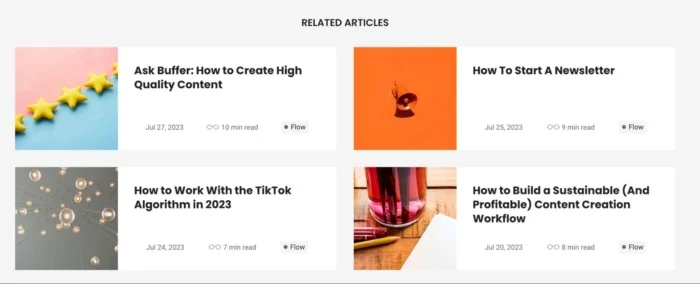Bounce Rate in Google Analytics 4 (GA4)
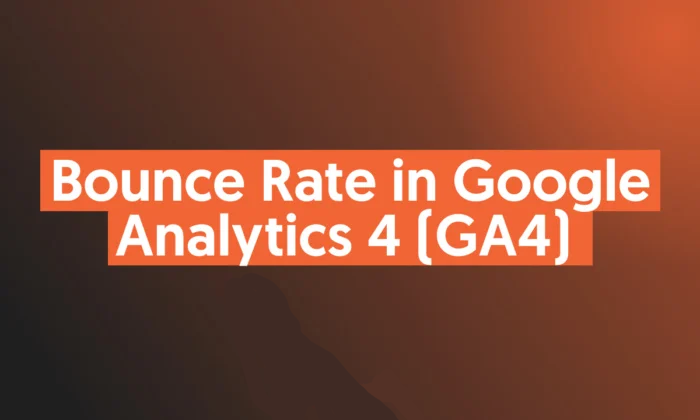
The bounce rate metric isn’t disappearing in GA4. But it is changing in a pretty significant way. GA4 bounce rate is measured as the inversion to engagement rate.
In this post, I’ll explain exactly what that means, show you how to calculate bounce rate in GA4, and discuss proven strategies that will help you reduce bounce rate.
So if you’re ready to get to the bottom of the Google Analytics 4 bounce rate, then let’s go.
What Is Bounce Rate?
Bounce rate has traditionally been calculated as the percentage of sessions where a user only views a single page. This is how bounce rate was defined in Universal Analytics, as well as in a host of different analytics tools.
So if you had 1,000 visitors last month and 100 of them left your website without looking at another page, then you had a bounce rate of 10 percent.
The bounce rate metric isn’t great for several reasons. It doesn’t work well if you have a one-page website or a site with an infinite scroll, for instance. It’s also not a great measure of engagement with a blog post. In these cases, having a high bounce rate wasn’t necessarily bad.
When it’s calculated this way, the bounce rate of most websites is probably higher than you think. If you were to break down bounce rate by industry, you’d find:
- Landing pages have a 70-90 percent bounce rate
- Retail websites have a 20-40 percent bounce rate
- Content websites have a 40-60 percent bounce rate
- Lead generation websites have a 30-50 percent bounce rate
Calculate Bounce Rate in GA4
GA4 measures bounce rate differently. In fact, it doesn’t really measure it at all.
GA4 bounce rate is now calculated as the inverse of engagement rate. Or to put it another way: your GA4 bounce rate is the percentage of sessions that weren’t engaged.
So, to calculate bounce rate we need to also know what constitutes an engaged session. According to Google, GA4’s engaged sessions meet at least one of the following conditions:
- Lasts longer than 10 seconds
- Has a conversion event
- Has 2+ page views
To calculate bounce rate, you need to divide the number of bounced sessions (those that did not meet the criteria above) by the total number of sessions and then multiply by 100 to get a percentage.
GA4 Bounce Rate = Bounced Sessions (non-engaged sessions) / Total Sessions x 100
So if you had 10,000 visitors last month and 8,000 of them were engaged according to GA4, then you would have a bounce rate of 20 percent using the following bounce rate calculation:
2000/1000 x 100 = 20
Easy, right?
How to Find Bounce Rate in GA4
It’s not just the way that GA4 bounce rate is calculated that is changing. The way you interpret bounce rate in GA4 is different (and harder) than doing so in Universal Analytics, too.
In Universal Analytics, bounce rate was listed in almost every traffic-related report. You can see an example in the screenshot below:
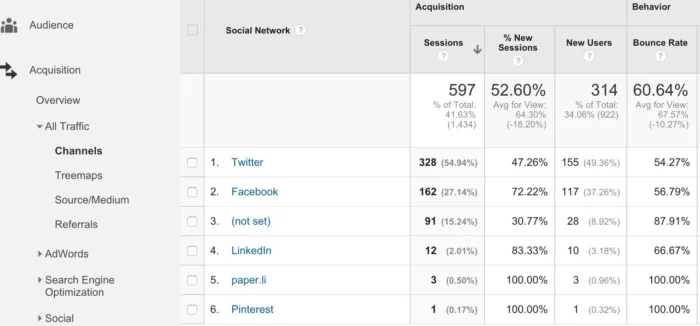
But there is no GA4 bounce rate report. Not in any of the platform’s standard reports.
To find and interpret bounce rate in GA4, you’ll need to customize your reports.
Start by signing into Google Analytics and clicking Reports in the left-hand menu. You’ll need to be an Editor or Administrator to customize reports, by the way.
Find the report you want to customize then click Customize Report in the upper right-hand corner.
Then click Metrics under Report Data.

Click Add Metric and then click Engagement Rate and Bounce Rate. Click Apply to save the changes.
Analyzing Bounce Rate
Analyzing bounce rate is crucial for understanding how effectively your website or landing page is engaging visitors. Bounce rate refers to the percentage of visitors who navigate away from your site after viewing only one page, without interacting further or exploring other pages. A high bounce rate can indicate that visitors are not finding what they expected or that your content isn't engaging enough. Here's how you can analyze bounce rate effectively:
-
Define Your Goals: Understand the purpose of your website or landing page. Are you looking to sell products, provide information, generate leads, or offer entertainment? Your goals will influence what constitutes a "good" or "bad" bounce rate.
-
Benchmarking: Research typical bounce rates for your industry or type of website. Different types of websites (e.g., blogs, e-commerce sites, news sites) have varying expectations for bounce rates.
-
Segmentation: Analyze bounce rates based on different segments, such as traffic sources (organic search, social media, referrals), devices (desktop, mobile), and landing pages. This can provide insights into where you might need to make improvements.
-
Content Relevance: High bounce rates could indicate that visitors are not finding what they're looking for. Evaluate your content's relevance to the keywords, ad campaigns, or links that brought users to your site. Make sure your content aligns with user expectations.
-
Page Load Speed: Slow-loading pages can lead to high bounce rates. Use tools to assess your site's speed and optimize it if needed. Users are more likely to leave if a page takes too long to load.
-
Mobile Responsiveness: Ensure your site is optimized for mobile devices. With a growing number of users accessing websites through mobile devices, a poor mobile experience can lead to high bounce rates.
-
User Experience (UX): Evaluate the design and layout of your pages. Confusing navigation, cluttered layouts, or intrusive ads can drive visitors away. Ensure a clean, intuitive, and easy-to-navigate design.
-
Call-to-Action (CTA): If your goal is to encourage users to take a specific action (e.g., signing up for a newsletter, making a purchase), ensure that your CTAs are clear and compelling.
-
Content Quality: High-quality, engaging content can encourage visitors to explore more pages. Evaluate your content's readability, relevance, and uniqueness.
-
A/B Testing: Experiment with different elements on your pages, such as headlines, images, layouts, and CTAs. A/B testing can help you identify what changes positively impact bounce rates.
-
Exit Pages: Analyze which pages have the highest exit rates (the last page a user views before leaving the site). This can provide insights into potential issues on those specific pages.
-
Conversion Funnel: Track the user journey beyond the landing page. If users are dropping off at specific steps in the conversion process, it could indicate issues that need addressing.
Strategies to Reduce Bounce Rate
Wondering how to reduce bounce rate? Let me help. Here are four ways to reduce your website’s bounce rate that can have a positive impact on your site’s overall experience.
Improve Website Design and User Experience
No one wants to use an ugly website. A great design and a fantastic user experience can do wonders for your engagement levels and bounce rate.
One element I find to be particularly effective at increasing engagement and, therefore, lowering bounce rate is clear calls to action. The easier it is for users to take action, the less likely they are to leave your website. If you can, personalize them, too. HubSpot found personalized CTAs convert 202 percent better than standard CTAs.
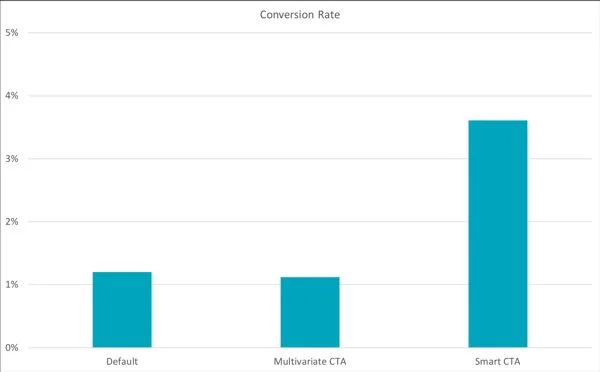
Make sure the mobile user experience is excellent, too. Over 58 percent of all web traffic comes from mobile devices at the time of writing, which means your site better be optimized for mobile.
Enhance Content Quality and Relevance
Creating high-quality, relevant content has always been essential. But it is particularly important if you want to improve engagement and, therefore, lower your bounce rate.
And it’s even more important now that GA4 uses the length of time a user stays on the page as a measure of engagement. The better your content, the more likely they are to stay on the page for 10+ seconds and be genuinely engaged.
If you’re struggling with ideas, I have two tactics that help.
The first is to cover a topic in more detail than anyone else. Yes, you can obviously write more words than the top-ranking blog post on Google. But if you really want to go above and beyond then consider adding proprietary data to your blog post. That way you have insights that no one else can possibly match. Here’s an example from e-commerce marketing agency Common Thread Collective:
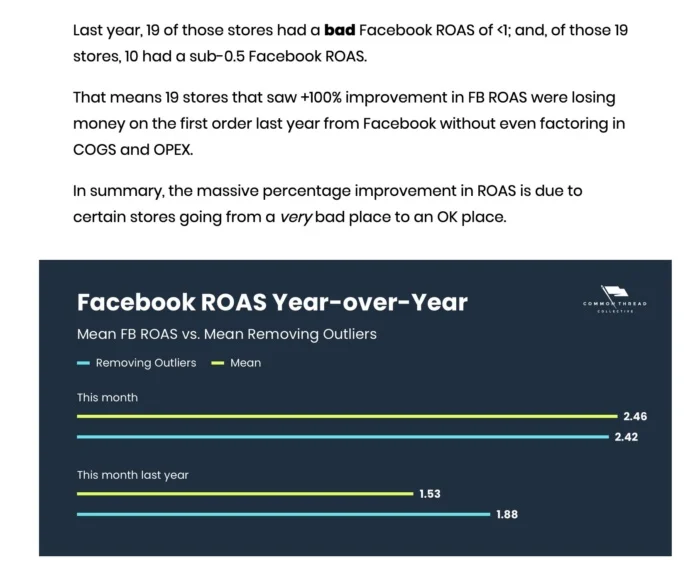
Another way to cover a topic in more detail is to solicit input from industry experts. Just like with the proprietary data example above, this strategy strengthens E-E-A-T and can boost your page above the rest of the results on page one. It may also help you generate backlinks, too.
This should go a long way to keeping users on your website for 10 seconds or more. My definitive guides are a great example of this.
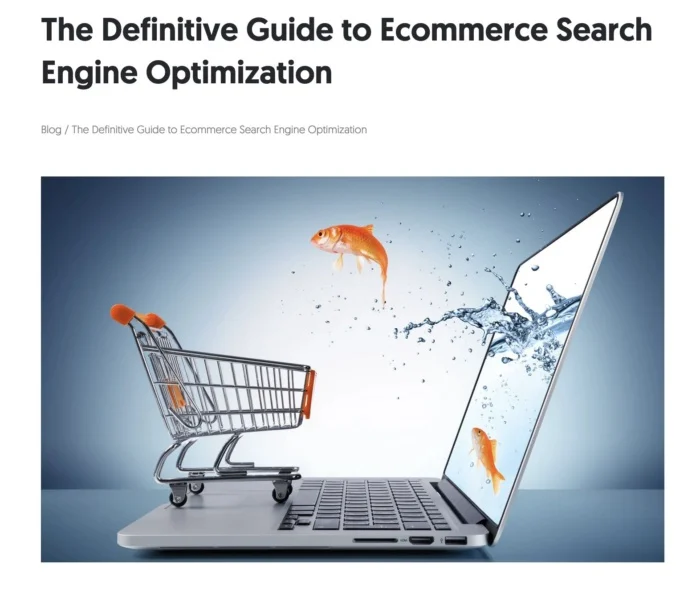
The second tactic is to take an unpopular or intriguing angle on a trending topic. By swimming against the tide rather than rehashing what everyone else has said, readers are likely to pay more attention to your content.
Spend some time making your content more readable as well as more relevant. You’ll know what I mean if you’ve ever clicked on a blog post and been confronted with a wall of text. You probably wanted to leave the site, right?
Make sure you aren’t encouraging users to ditch your site by using lots of headers, keeping paragraphs short, and using images where appropriate.
Optimize Page Load Speed
Page speed matters. Users are much more likely to engage with a page that loads quickly and more likely to leave a page that fails to load in a few seconds. Research shows that sites that load within one second convert three times more often than sites that load in five seconds.
You can use a tool like Pingdom or Google Page Speed Insights to measure your site’s loading speed and find out what you need to improve.

There are bound to be a couple of things you can improve by running your website through these tools. As you can see, even my website isn’t perfect.
Some common issues include:
- Large images
- Poor hosting
- Too many WordPress plugins
- Large file sizes
Read my guide on scoring a perfect 100 percent on Google PageSpeed Insights for more advice.
Implement Effective Internal Linking Strategies
Improving your website’s internal linking is another easy way to reduce bounce rate. In fact, this strategy will reduce bounce rate regardless of whether you use Universal Analytics or GA4’s definition.
Adding more text-based links can encourage users to explore your site in more detail. It’s a tactic I use religiously. You’ll notice how many internal links are on this page, for example.
But you can take this strategy even further by adding a related articles widget to the bottom of your blog posts, or even using popups and other interactive elements that encourage users to visit another page. Here’s a great example of how Buffer uses related articles to keep users engaged:
